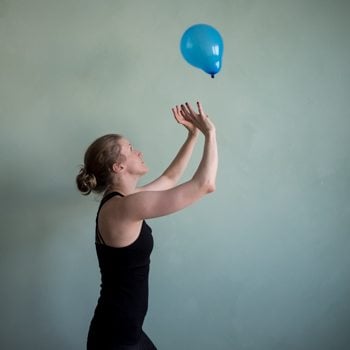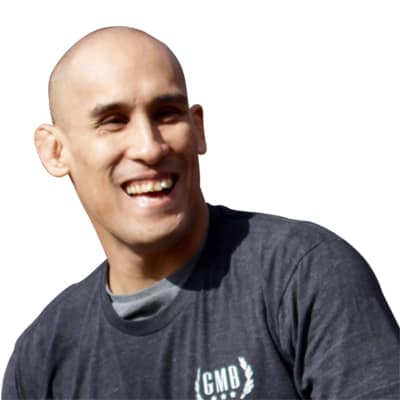We all want to move through life with effortless confidence. Whether it’s in our sports or hobbies, or simply getting our chores done around the house.
Developing good coordination is key to this, for both excelling in physical activities and essential daily tasks. Think of the last time someone tossed you the car keys—did you catch them with ease, or did they fumble through your hands? We don’t really think about it but moments like these highlight the importance of coordination. And these moments add up. We tend to laugh at our own -and others!- clumsiness, but we can absolutely get better!
Unfortunately many fitness programs overlook this crucial aspect. Working in coordination exercises into your routine can transform your agility, precision, and overall physical confidence.

In this article, I’ll show you how coordination programs your body for smooth, effortless movement. And I’ll share my favorite drills you can use to improve your coordination while having a lot of fun.
Why Do You Need to Train Coordination?
 It’s easy to fall into the trap of only thinking of improving strength, mobility, and conditioning as valid training goals.
It’s easy to fall into the trap of only thinking of improving strength, mobility, and conditioning as valid training goals.
After all, those attributes should make up the majority of your training time.
Improving your coordination lets you perform complex movements faster, smoother, and with more confidence. It’s what lets you save a toddler from falling into a sharp-edged table, catch a glass your spouse knocks off the counter, or keep your grandma from falling when she trips.
And it’s really fun! It makes challenging things feel easier so you can explore new possibilities in your favorite activities.
Take our client Dana, for instance. She has Multiple Sclerosis, so coordination is a big challenge for her. But using fun movements like what I’ll show you below helped her improve her coordination so she could move on to a higher level of practice. Her example is pretty dramatic! But it’s just a matter of degree, be assured the benefits of improving coordination apply to everyone
If you’re not strong enough or flexible enough to do the things you love, you absolutely need to spend time working on that. But for well-rounded physical performance–not to mention the ability to apply the strength, mobility, and conditioning you’re building–it’s important to work on your motor control and coordination as well.
Activities that specifically target coordination are helpful because our nervous system creates pathways from the brain to the body based on repetitive action. The phrase “cells that fire together, wire together” means that whenever you practice a physical activity, the system learns from that activity as the cells learn to work together. Practice ingrains patterns, making our movements smoother with less effort.
And it’s also pretty fun. What?! That’s not allowed! But yes, a bit of coordination drilling can energize an otherwise listless and dull workout.
Try these Unique Exercises for Lower-Body Coordination
Let’s start with these lower body focused movements. Developing lower-body coordination is crucial for effectively applying leg strength in sports and daily activities. From walking to highly competitive sports, coordinating ankle, knee, and hip joints while managing long lever movements is essential.
Here’s a video that includes one of my favorite leg coordination exercise to improve your performance in activities and sports but also help you with everyday tasks, such as avoiding stepping on scattered Legos in the dark.
Squat to Knee-Drop Transition – Key Points
First of all, make sure you are comfortable performing this movement before moving trying to make it more challenging.
Coordination doesn’t require load or intensity the way other types of training do. In fact, adding speed or load to a complex movement can risk injury, so remember that the goal is smooth, controlled motion.
The key to smooth, coordinated movement in the knee-drop transition is proper foot positioning.
While squatting, place one hand behind you to support your weight. As you drop your knee, focus on pointing your toes and keeping your foot flat to roll over the top of your foot and sit on your heel. This positioning allows for a smooth transition between standing and squatting.
There’s no specific number of sets and reps for these exercises; focusing on movement exploration is more important. Incorporate the drill as a warm-up, cool-down, or simply practice while watching TV in the evening. Bring your focus to each part of the movement—hips, knees, and ankles—ensuring you’re aware of what’s going on during each exercise.
Improving leg coordination isn’t just about strength, it’s about combining strength, flexibility, and control to achieve better physical autonomy. Practicing these exercise combinations will elevate your overall performance and make your movements more efficient in sports and daily activities.
Build Full-Body Coordination with Locomotion Exercise
This next exercise is just one example of how we bake in coordination training in the movements in our Elements program. It’s the Cross Step Bear Walk, one of the many variations of the Bear crawl.
Along with improving full-body coordination, this particular exercise builds scapular strength and mobility, rotator cuff and spinal strength, and enhanced hamstring and calf flexibility. All in one go!
Building Coordinated Movement with the Cross-Step Bear Walk
- Set up your body position: Start with your hands and feet shoulder-width apart, shoulders over your hands, and hips over your knees. Drive your butt up into the air as high as possible.
- Coordinate the basic bear walk: Take one step forward with your right hand and left foot, followed by your left hand and right foot. Ensure that you drive your butt high up into the air.
- Bring your feet closer together: Change the dynamic of the bear walk by bringing your feet closer together, maintaining your toes and feet facing forward. This change will help you focus more on your balance and coordination.
- Practice pivoting on the balls of your feet: Stand up and focus on pivoting on the front foot as the back leg steps across. Alternate steps across your body while pivoting on each front foot.
- Combine the movements: Start in the A-frame position, with your feet shifted to face in the same direction. Practice the cross step bear walk by following the same steps as described above, while continuously pivoting on your feet and driving your hips up into the air.
By breaking the exercise into smaller components and focusing on specific aspects such as footwork, hand placement, and hip movement, you can master the cross step bear walk more easily.
This exercise will not only improve your coordination but also enhance your hip mobility, making it a valuable addition to your workout routine. Remember to practice consistently, maintain proper form, and enjoy the benefits of the cross step bear walk.
Specific Coordination Drills: Cool Party Tricks Edition
While locomotion exercises give you the best of full body strengthening and mobility work alongside coordination training, there are loads of different activities that you can work on for hand/eye coordination training. These simple and fun exercises really do give you a lot of bang for your buck and you’ll be surprised at how quickly you can improve!
There are so many examples we could include here, and really, you could find so many drills to do with whatever you enjoy the most. But to give you an idea of what I’m referring to when I say “hand/eye coordination,” here are some options you can try out.
Let’s take a look at each of the drills Ryan and Verity demonstrate in the video:
Drill #1 – Balloon Tossing
 This fun partner exercise has you catching and bumping the ballon back and forth with each other using your hands, heads, and other body parts.
This fun partner exercise has you catching and bumping the ballon back and forth with each other using your hands, heads, and other body parts.
Change the angles and speeds to keep it unpredictable, and try starting out facing different directions or work on standing closer together or further apart.
You’ll see, this game can be a lot more challenging than it looks.
Drill #2 – Juggling
 More than just for those creepy clowns at birthday parties, juggling is a great way to develop rhythm and timing.
More than just for those creepy clowns at birthday parties, juggling is a great way to develop rhythm and timing.
Start with slow circles with just two balls, finding your pacing and coordination between both hands, then add the third ball. It’s amazing how the addition of that extra ball can make you speed up too much and lose your rhythm.
The benefit of this exercise is in the repetition and the awareness of how off-beat you can be when you are flustered.
Drill #3 – Small Ball Tossing
 Another partner exercise, this time with a small ball, this drill allows for faster speeds than with balloons.
Another partner exercise, this time with a small ball, this drill allows for faster speeds than with balloons.
Change up the speeds, angles and throwing patterns for endless variations. Also work on facing away, then your partner tells you to turn as she tosses the ball over. This requires a quick orientation of direction that you don’t get from simply watching the ball as you catch it.
Drill #4 – Jump Rope Drills
 A classic conditioning exercise, jumping rope also works on hand/foot/implement coordination when you progress beyond two foot hopping.
A classic conditioning exercise, jumping rope also works on hand/foot/implement coordination when you progress beyond two foot hopping.
Running in place, one foot multiple hops, and crisscrossing are all options you can play with. Keep the rope moving at a steady pace while you get fancy in your footwork, and jumping rope can be an incredible coordination drill that teaches you how to maintain rhythm and control while fatigued.
Drill #5 – Target Practice
 A staple hand/eye drill, target practice involves the complex but very natural skill of throwing and accurately sighting and aiming that toss.
A staple hand/eye drill, target practice involves the complex but very natural skill of throwing and accurately sighting and aiming that toss.
It’s both surprisingly difficult and addicting to practice hitting at a target.
Start close to the target and progressively move further away from it, and also play with standing at different angles rather than directly in front of it. You can add another level of difficulty by turning away, then quickly turning and aiming for the target.
Drill #6 – Ball Toss from Different Positions
 Back to the ball toss, you can vary your orientation and positioning to add even more variety to the activity.
Back to the ball toss, you can vary your orientation and positioning to add even more variety to the activity.
Try on both knees, moving in a squat, lying on your back or stomach or side, lunge positions–whatever feels most challenging and fun.
This is a great chance to incorporate some mobility work into your coordination drills.
Drill #7 – Balloon Hockey
 Using a balloon instead of a small bean bag or “hacky sack” slows down the rate of fall, making this an easier exercise, though the ballon’s lightness can be a bit more unpredictable when you hit it strongly.
Using a balloon instead of a small bean bag or “hacky sack” slows down the rate of fall, making this an easier exercise, though the ballon’s lightness can be a bit more unpredictable when you hit it strongly.
Work on finessing your movements to keep the balloon up in the air and play with the positioning of your foot and body. Again, different positioning changes the exercise entirely, so work from standing, squatting, kneeling, and on your back.
Drill #8 – Dribbling
 Dribbling a small ball as you would a larger basketball is more unpredictable with the size of the ball necessitating changes in how hard you hit.
Dribbling a small ball as you would a larger basketball is more unpredictable with the size of the ball necessitating changes in how hard you hit.
The distinct speed you need to maintain the right angles requires a good amount of practice and perseverance.
Practice dribbling with one hand and switching back and forth between both hands. Play with different speeds, and dribbling closer to the ground or further away from it. There are many possibilities here.
Drill #9 – Wall Ball Bounce
 When you don’t have someone available to toss around a ball with you, all you need is a solid surface in front of you and bouncy ball. When you switch up how you toss the ball, and the angles from which you aim for the wall, there’s little predictability in the way the ball returns to you.
When you don’t have someone available to toss around a ball with you, all you need is a solid surface in front of you and bouncy ball. When you switch up how you toss the ball, and the angles from which you aim for the wall, there’s little predictability in the way the ball returns to you.
Work on throwing the ball from different distances and aiming for different points on the wall, or aim for the floor so that the ball bounces off the wall.
Drill #10 – Targeting through Rings
 This is another version of target practice, where you are now tossing objects through an object with an open area. Hoops, rings, cardboard cutouts, large to small openings–these are all different sighting stimuli for targeting, and they add even more variation to your target practice.
This is another version of target practice, where you are now tossing objects through an object with an open area. Hoops, rings, cardboard cutouts, large to small openings–these are all different sighting stimuli for targeting, and they add even more variation to your target practice.
The further away you are from the rings or other open area, the harder it will be to make your target. See how challenging you can make this fun drill!
How to Program Coordination Exercises Into Your Routine
 How long should you do these for? Until you get bored or tired out. The goal here isn’t to “never miss a toss for five minutes straight” or to “make your training partner drop a ball.”
How long should you do these for? Until you get bored or tired out. The goal here isn’t to “never miss a toss for five minutes straight” or to “make your training partner drop a ball.”
It’s to play with some activities you haven’t done in a while and stimulate your nervous system in these novel movements.
Movement exploration doesn’t have to be very physically demanding or a great test of your strength and flexibility. It can be within the range of what you can already do so you can concentrate less on its physical difficulty and more on the activity itself.
These are just a sample of the things you can do to improve your hand/eye coordination. You are limited only by your imagination!
Applications of Better Coordination
I’m very biased towards this, but one great way of using an apparatus as an extension of your extremities is different forms of weapon play. This is especially true in arts that emphasize combination movement and flow, such as in the Filipino and Indonesian martial arts.
Here is my friend Rob, who has been doing Filipino Martial Arts for many years, demonstrating his proficiency with the balisong, also known as a “butterfly” knife.
This is a prime example of the extremity/eye coordination we’ve been talking about.
Here you see great dexterity and control that is also augmented by the need to be precise with a sharp blade, otherwise you will hurt yourself. This adds on another layer of concentration. There’s nothing like the anxiety of getting cut to heighten your senses and make you pay attention!
I’m not saying everyone should go out and play with knives, but it is another fun and interesting option for exploring your movement palette.
Open Up Possibilities for Yourself With Better Coordination
 I know these aren’t your typical “exercises,” and what we’re proposing–playing fun games–isn’t what you might expect for a workout routine. But, these types of varied and unique activities will help you improve your coordination and motor control like nothing else.
I know these aren’t your typical “exercises,” and what we’re proposing–playing fun games–isn’t what you might expect for a workout routine. But, these types of varied and unique activities will help you improve your coordination and motor control like nothing else.
And when you have better coordination, you become more adaptable, and better able to handle curveballs when they happen.
Plus, with improved coordination, so many more possibilities are open to you. You can work toward so many more skills, can get involved in so many more activities if you want to. And you’ll move through life so much more easily.
The drills we’ve shared here are really just a fraction of the kinds of exercises and games you can work into your routine.
To get complete control over your body and start building strength, improving mobility, and increasing coordination, check out our Elements program.

Since we have been utilising these movements, I have noticed greater range of motion and flexibility in other movements and activities I perform inside and outside of the gym. These 3 moves and their endless variations add an element of fun to training.
When I first started I was challenged with getting the coordination - especially the bear because I had tight hamstrings and my brain wouldn't allow me to move opposite arm and opposite leg. But by continually working these movements, I have improved my hamstring flexibility and control.
Practicing coordination exercises can:
- Improve body awareness and control.
- Enhance balance, stability, and agility.
- Strengthen muscles and joints.
- Boost athletic performance.
- Reduce the risk of injury.
- Support mental well-being.
And if you’re an athlete, incorporating specific coordination exercises for your sport can lead to significant performance gains, making you a more efficient and accomplished athlete.
Build Coordination and Agility a Part of a Well-Rounded Physical Practice
We created our Elements program around around locomotor movement patterns to train your coordination while building strength and mobility in every physical activity.




